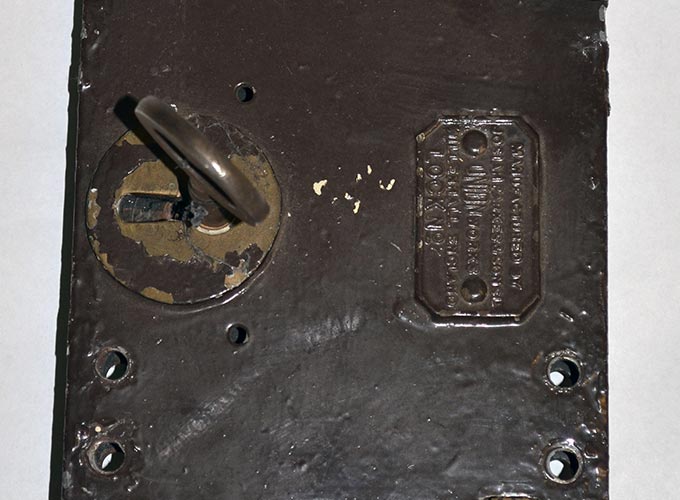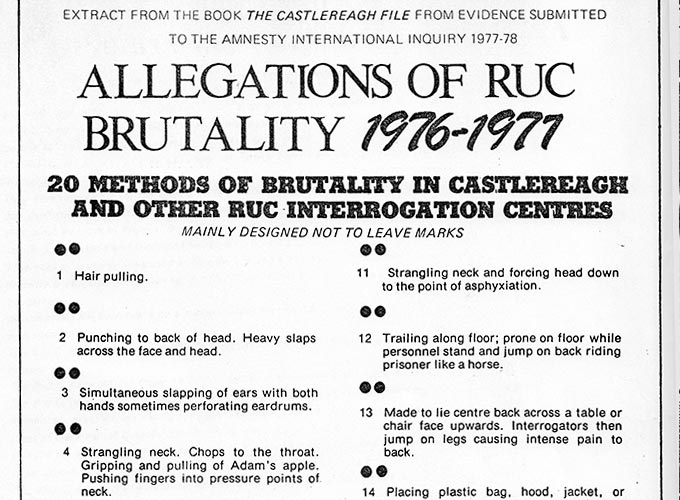Description
A door lock from a cell in the Castlereagh Detention Centre. By 1972, Royal Ulster Constabulary (RUC) detection rates had fallen to 21% down from the pre-Troubles level of 61.9%. During investigations, the threat of paramilitary violence prevented the police from identifying corroborating evidence and securing witnesses testimonies. The phasing out of internment without trial put a renewed emphasis on the use of legal proceedings to apprehend and convict activists. The Northern Ireland (Emergency Provisions) Act 1973 allowed the courts to convict a suspect using a confession provided there had been no torture, or inhuman or degrading treatment. In 1976, with 500 unsolved murders, Chief Constable Newman set out to improve the interrogative capacity of the RUC and the Castlereagh Detention Centre was at the heart of this new strategy.
Under the Prevention of Terrorism (Temporary Provisions) Act 1974, suspects could be held for 48 hours and up to seven days with written authority from the Northern Ireland secretary of state. During this time, the suspect was prevented from seeing any visitors or a solicitor and was only allowed access to a doctor. Doctors began to report cases of prisoners being injured while in police custody and in 1976, 322 out of a total of 3,042 detainees made an official complaint against the RUC. By end of 1977, official complaints by interviewees had risen to 2,000 and concern over the standards of interrogation was expressed by politicians, doctors, solicitors and churchmen. In response, police introduced a monitoring system and made modifications to cells and transport facilities.
In November 1977, Amnesty International investigated the ill-treatment of suspects at the Castlereagh Detention Centre and recommended an impartial public inquiry. In March 1979, the Bennett inquiry delivered its report on police interrogation procedures and uncovered 15 cases of injury “inflicted by someone other than the prisoner himself”. The report made 64 conclusions and recommendations on changes to interrogation procedures. These proposals included greater supervision of interviews, a code of conduct for interrogating officers, the use of CCTV during interviews, access to lawyers after 48 hours for detainees and the option of a medical exam after each interview. The number of official complaints declined after the publication of the Bennett report and by July of that year, the RUC had installed CCTV in all interview rooms. Investigations of the 15 cases of injury to prisoners were conducted but no police officers were brought to trial.
Links
- Related objects > Anti-interment posters
- Related objects > RUC Police Primacy recruitment leaflet
- CAIN - NAI documents: Fr Denis Faul and Fr Raymond Murray on torture … [and] case against internment
- CAIN: Diplock report
- CAIN - PRONI documents: Letter and memorandum re: Bennett report
- CAIN - PRONI documents: Treatment of prisoners at police centres
- CAIN: Bennett report
- CAIN: Amnesty International report



